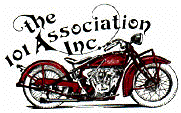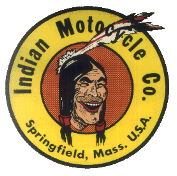There's an youtube snip of KIWI Thomas assemble a Chief transmission.
https://www.youtube.com/watch?v=_HK06bLXYDE&feature=youtu.be
It is good, informative and in most parts also relevant to the Scout trans. I watch the video and give comments as it proceeds.
There is a few details where I don't agree with his method. A bit in, 1:45 he is talking about drilling holes in order to punch out an old bushing and that is OK and one way to do it. But then he is recommending plugging the countershaft tell-tale hole in the trans case. The bushing must be set with interference fit in the case and his recommendation of a harder fit than from factory is spot on, but then he wants a plug for the center hole.
The countershaft has to fit the bushing with an interference fit, not as hard as the bushing, but it is important that the fit is such that you have to lightly knock in the shaft in the bushing. Primary the hole is to knock the shaft out. BUT If the shaft or the bushing starts to get loose from wear or any other fault, then an oil leak emerges through the tell-tale hole and it is a sure sign that the cluster gear is loose and you need to fix the gearbox pretty soon! If you find that the countershaft isn't fitting with interference in that bushing, and it is not caused by the hole very commonly beeing worn oval, maybe you can resolve it with glue it with bearing loctite..
Then at 4:00 he is talking about grinding the inner cover to adjust the fitting. I personally haven't found grinding of the inner cover needed. The Scout has a gear transmission that is sensitive to gear lash and should be shimmed behind the lugs properly for both parallelism and gear lash, preferably with all new bearings and new clutch basket bushing properly fit. (Bushing honed to about 0.0254mm play to the shaft but the sprocket gear needs more, at least 0.0381mm play)
Gear lash should be set so there is a audible click between the cogs all around the circumference. Clutch basket gets hot and expands and tight is bad. Many times the gear lash is uneven and that can be caused by a bent mainshaft (if the bushing is tight enough) oval or bent clutch basket. Check if you can fix any of that or change a part. If not, shim the gearbox so you still have gear lash at the smallest portion.
7:10 I personally only use a good gel anaerobic gasket sealant between the inner cover and case. That is easy to clean up and reapply and easy to carry in the toolbox and is useful on most other gasket surfaces and oil leaking threads on the bike. It only hardens where the surfaces are tight together, that way it does not make hardened sausages outside the joints like other sealants. A broken gasket is more problematic when you have to make-shift repairs on the side of the road. And with a gasket there is 2 additional surfaces to keep spotlessly clean at assembly.
9:30 When mounting bushings and bearings always heat the case. I heat the area on the case with a professional hair dryer until a drip of spit or water sizzles good. It is only heat that is required so the method is not crucial but it has to go slow, it can be done with a cup of burning denaturated spirit, a simple candle or big soldering iron, don't use an oxy welder or pin point torch, the intense spot heat can ruin or warp something.
I disagree with Thomas on another detail 10:35. I recommend double side sealed bearings everywhere possible, not to remove any of the sealings because the oil is contaminated in short order with hard metal shards from gear grinding, debri from clutch lining and bushings and other dirt. Shielded bearings is only second choice. The pre-lubricated sealed bearings have a life expectancy way longer than unsealed bearings.
11:15 If you are going to reuse the retaining nut on the chain side, make a key for it. Often the holes are ruined by someone used a chisel to tighten the nut. Drill 2 new shallow holes in the nut. Make a C shaped flat iron tool, drill through for bits of drill bit shanks as pins, and spot weld them on the backside. At final assembly, use threadlocker on the threads. All and every thread! Always. No exeption.
It is possible to adapt a 6007 double sealed bearing instead of the thin 98207, but that require some skilled turning and careful fitting of a special half way cup, special half way nut and a spacer ring. With that the useless felt seal is scrapped and the bearing is stronger than original. A simpler modification is to use the thin 98207 bearing and just use a new nut that has provision for a rubber lip seal. The distance collar for the sprocket needs to have really smooth surface for the rubber lip seal. New is new.
Then there is talk about cluster gear bushings or roller bearings 15:41. Bushings are safer in my mind because of the dirty oil. I haven't tried roller bearings and feel that I doesn't have to. Side play for the cluster gear between 0,13-0,25mm.
Then 22:47 he goes to line-in the clutch basket. As the 101 has gear and not chain transmission the basket does not need shimsing normally, 101 basket has a larger tolerance sideways. However check carefully! If the alignment is off, the clutch main bearing might not have been seated all the way in its seat! And it is possible with clutch baskets machined differently or interchanging parts from other models. I have seen wear marks at the inside of the basket from the case, as well as on the outside. That can be caused by worn bearings but check that there is ample distance to the case. Yours might need shimsing.
Then 27:50 he gives valuable info on shimsing the mainshaft. (end play between 0,13-0,25mm) But when torquing the clutch basket he talks about using a hammer and chisel. With the tools that he has and that I have, I can pull the nut so hard until the threads fail. I would never use hammer and chisel at the final stage on the nut, the risk of denting the nut grips is overhanging and I can't have same feeling of the strength used with a hammer. I use Locktite on the threads and arm strength to know when enough is enough...Then I use a punch and hammer to bend over the lockwasher. The lockwasher is very difficult to get behind when new and flat so I pre-bend or twist the edge beforehand. Otherwise I need a carpenters sharp end chisel or some other sharp tool to get behind and that can cause chips to come off.
31:08 The ratchet spring washer needs to ride on the shaft shoulder otherwise the kicker doesn't return easily when the engine starts up. Many, if not most repro washers are not hardened as originals, so a groove from the ledge is worn quickly and the kicker starts to ratchet. A turn of a coil spring of a suitable size can be cut and used as a distance on the shaft to fix that.
Then he talks about the crankshaft seal 32:07. I haven't tried his seal, but would recommend it warmly if it is possible to adapt to the 101. I have worked with the cork cushion and that is a presicion job without guarantee that it works. Fitting and function of the cork cushion can and gives a lot of problems at all stages.
The thought is that the pliable cork should press on the thrust washer and allow the crankshaft to move sideways (crankshaft sideplay 0,25-0,30mm without the drive sprocket thrust washer and 0,15-0,20mm with the washer installed) and still keep the thrustwasher tight to resist crankcase pressure to migrate into the transmission case, or vaacum to suck transmission oil from there.
If the cork is set too hard, no oil is getting into the main bearing and also the inner or outer thrust washer can gall! Too loose and you get compression in the transmission and oil disappears. The cork can have different properties, it can wear or harden, or shrink or swell so there is no consistancy. It is a poor solution altogether.
With a new cork it should be adjusted so you have difficulties to turn the thrust washer with a screwdriver. But how much difficulties? Well, a little but not too much... Newer Scouts got a big improvement of the main bearing lubrication. A slanted hole was drilled a bit above the main bearing into the middle of the bearing outer race. The race needs to be taken out before a drilling or grinding a hole in it is possible.
Then 32:54 Mike is going back to the transmission and describes sealing of the shifter fork shaft. That applies if there is a small pivot hole drilled through the case. I haven't seen that on 101 cases so it is not needed.


